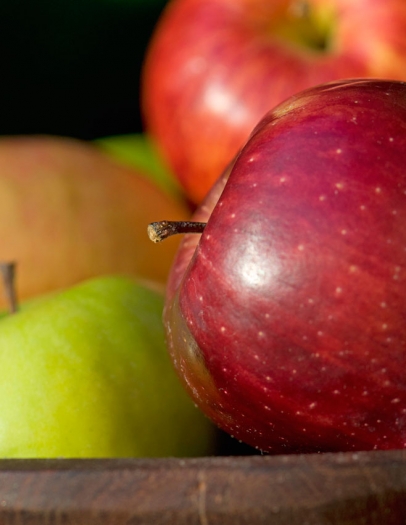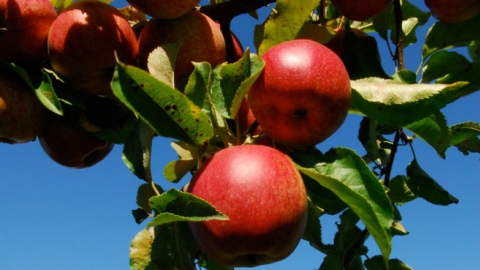Much Ado About Apples
As tomatoes fade, apple season draws nigh. The pomaceous fruit of the apple tree, species Malus domestica of the Rose (Rosaceae) family, matures into a scrumptious globe come autumn. The Rose family includes apricots, plums, cherries, peaches, pears, raspberries, and almonds, many of which are professed “super foods.”
Apples emerge on small, deciduous trees which range from 10’-40’ tall with a broad, dense twiggy crown. The tree originated in southwest and central Asia, where its wild ancestor, Malus sieversii, is still found. Apples have been grown for centuries in Asia and Europe and were imported to the New World by European colonists in the 17th century. It was perhaps the earth’s earliest cultivated tree with hybrids and cultivars developed over time, which yields the nearly 8,000 varieties recognized now.
Looks can be deceiving with apples as well. Usually supermarkets insist on waxed, buffed, blemish free apples to meet cosmetic standards – yet ugly, gnarly, heirloom, organic varieties are often superior in flavor and texture and are free of pesticide residue.
Apple Lore
The biblically forbidden apple has historically become a symbol for temptation, discord, seduction, sexuality and outright sin. In Latin, the words in singular for “apple” (malus) and “evil” (malum) are strikingly similar, and they are even identical in the plural form. So, apparently it follows linguistically that by eating the malus from the tree of knowledge, Eve likely contracted malum.
The protrusion at the front of a human throat has been dubbed an “Adam’s Apple” because the forbidden fruit became lodged in his throat.
The Apple of Discord, inscribed with “For the Fairest,” was awarded to Aphrodite by Paris allowing him to elope with the comely Helen, causing a quarrel among the goddesses and helping to cause the epic Trojan War.
In Austrian ruled Switzerland, William Tell refused to bow in homage to a nobleman’s hat placed in the town square. As punishment, he was ordered to shoot an apple off his son’s head.
Sir Isaac Newton’s formulation of the laws of gravity was supposedly prompted by the fall of an apple onto his head.
The Belgian surrealist painter, René Magritte, challenged our perception of reality with his profound and provocative images of the ordinary apple.
The Apple logo has become flatly iconic, appearing ubiquitously on laptops, iPads, iPhones, iPods, on automobile windshields, and in stores across the world.
Apple Health
The nutritional benefits derived from these simple fruits abound and astound. To start, a medium sized apple has about 90 calories, 4 grams of fiber, no fat, no sodium, and no cholesterol.
While researchers concur that we consume too much sugar which contributes to obesity and related health problems, many in the rush to avoid sugar are omitting fruits in their daily diets. Unadulterated fresh fruit has yet to be linked to any adverse health effects, and increased fruit intake is tied to lower body weight and thus a reduced risk of obesity incident diseases.
Whole fruits contain a wealth of antioxidants and healthful nutrients, and their cellular architecture, made of fiber, makes humans feel fuller while furnishing other metabolic benefits. For instance, an apple’s fruit aids in slowing the absorption of fructose, the main sugar in most fruits. Sugars are isolated in fruit cells, so it takes time for the digestive tract to break down those cells. The sugars enter the bloodstream slowly, giving the liver ample time to metabolize them. This slow rate of absorption minimizes repeated surges in blood sugar which decreases the risk for Type 2 diabetes.
Unlike processed foods, which are usually digested in the first few feet of our intestines, fiber-laden fruit breaks down more slowly so it travels further down the digestive tract, triggering the satiation hormones that tend to cluster lower in the small intestines.
The phytonutrients and polyphenols in apples can assist in regulating blood sugar and preventing spikes through a maze of mechanisms. The soluble fibers called pectin, as well as insoluble fibers in the meat of the apple help relieve the digestive tract and liver of toxins. Recently, research has demonstrated the beneficial impact of apples on bacteria in the gut as well. “An apple a day keeps the doctor away,” may well be a medicinally sound adage.








